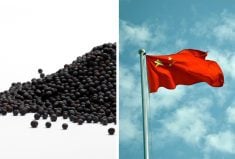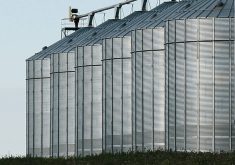WINNIPEG (CNS) – Even though the pulse crop trade with India hasn’t been rosy lately, the head of a Canadian pulse shipping and processing company believes the tides will soon change.
“India’s going to buy again this year. We’ll have to see what level but we think the recoveries are going to start slowly,” said Murad Al-Katib, president and CEO of AGT Food and Ingredients.
In the last few months of 2017, India imposed tariffs on pulse imports into the country, as a way to support local farmers and drive up domestic prices. The first in November saw a 50 per cent import tariff applied to peas. In December, a 30 per cent tariff was placed on imports of lentils and chickpeas.
Read Also

Canada, Mexico look beyond U.S. as agri-food trade pact expands
Earlier this week Heath MacDonald, Canada’s Minister of Agriculture and Agri-Food and Mexico’s Secretary of Agriculture and Rural Development, Julio Berdegué, met to discuss bilateral relations and strengthen cooperation and trade ties between the two countries.
As well in October, Canada didn’t receive an extension on an exemption for fumigation of pulses before arrival in India. However in early January an exemption was applied to all countries importing to India.
Al-Katib is pleased to see fumigation fees even for all countries, as he hadn’t been impressed when there was non-tariff trade penalties against Canada.
“We think at the end of the day this will get resolved over time because the long-term fundamentals state clearly India will continue to be a net importer of pulses,” he said.
India has previously stated it plans to become self-sufficient for pulses but Al-Katib doesn’t believe that is feasible. India consumes 24 million tonnes of pulses each year and consumption is growing at a rate of at least one million tonnes per year. However over the course of five-years India hasn’t produced more than 18 to 19 million tonnes of pulses per year.
Currently, even with the tariffs and fumigation fees in place, AGT is still exporting pulses to India. AGT is currently shipping whole grain peas, red lentils and green lentils. The company has its own facility in India.
“The duties in India are known, the fumigation is now a level playing for everybody, the five times penalty equates to about C$12 per tonne. This is not a disaster in our supply chain,” he said.
January and February usually aren’t a robust import time of year for India, according to Al-Katib. The Indian harvest is in March, so the busy import season usually starts after. Once India knows how the big the pulse harvest iss, Al-Katib believes India will import more pulses.














